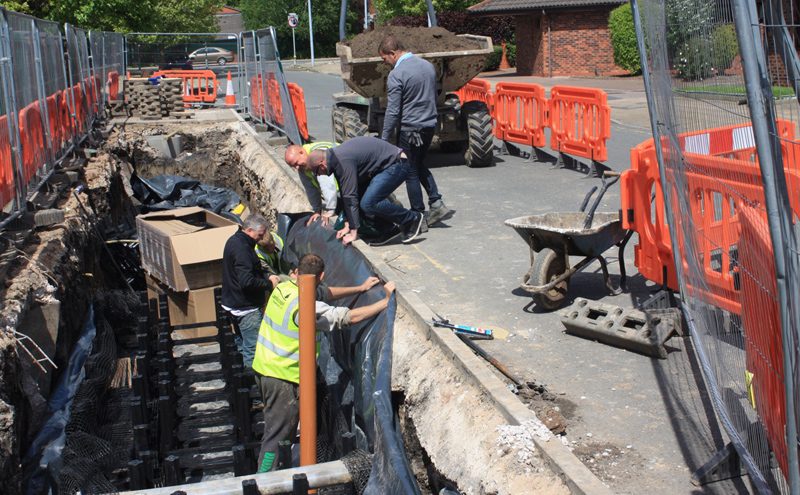
City of Trees – a group attempting to coordinate stakeholders and community groups across Greater Manchester for the purposes of restoring woodland – says it is pioneering new techniques in green infrastructure to combat flooding and clean polluted water.
The group is said to be delivering a number of practical initiatives around tree planting and woodland management, all of which are contributing to the ambitions of improving the green infrastructure of the city region and engaging more people in its green space.
Working alongside Mersey Forest, the group has seemingly developed a model for mapping locations in the Irwell and Mersey River catchment, identifying places where there is both a need and an opportunity for installing trees and other green infrastructure (GI) to help prevent and reduce water pollution and surface water flooding.
Surface water flooding is becoming an increasing problem – particularly in urban areas where surface water has no porous areas to run to.
Urban woodlands and the integration of trees and other green infrastructure alongside sustainable drainage solutions are being increasingly recognised as having important benefits in improving the condition of the water environment.
The Irwell and Mersey Catchment mapping identifies pathways of water pollution and captures opportunities of places where they can be intercepted before they reach the main watercourse. It also highlights surface water flooding in areas where there is nowhere for the water to be absorbed.
By looking at this, City of Trees can then see where there exist opportunities to combat these problems and carry out a site visit to see if planting trees or installing other green infrastructure is feasible.
The programme has been developed and co-funded in partnership with The Environment Agency and United Utilities, and forms part of Natural Course, an EU LIFE- integrated project.
Pete Stringer, technical and GI planning manager at COT, said: “The green infrastructure mapping will help us assess the detailed range of opportunities present in any given location. This model has already been used to build a portfolio of new GI projects, and is being developed further and extended to include the upper and lower Mersey catchments.”
Alongside this City of Trees is also carrying out a demonstration project with the University of Manchester and the Environment Agency to test the impact that a large tree planting trench can have on the quantity and quality of rain water running off the road.
On Howard Street in Salford, City of Trees has installed a connected tree trench (20 metres long, 2 metres wide and 1.65 metres deep) which hosts three London Plane Trees at the heart of it. The Planes were chosen because of their resilience to pollution.
Rainwater run off is diverted into the tree pit from the road via slot kerbs. The aim is to provide evidence of how street trees can be used as a natural solution to managing surface water; reducing flash flooding and at the same time removing pollutants from cars held within the water before it enters the sewer system.
Dr James Rothwell from the University of Manchester is analyzing the results over a two-year period to monitor the impact. He said: “After 12 months of monitoring, the tree system is significantly reducing peak flows and delaying road run off. It is hoped that this project will lead to a culture shift in the design of highway infrastructure for future development projects.”
Following the initial success of this collaboration, City of Trees, The Environment Agency and University of Manchester are now working with Bury Metropolitan Borough Council on a project where they have designed a scheme with the council’s road and drainage engineers.
The scheme to plant up to 30 street trees is part of a much larger £2 million regeneration project to improve Prestwich High Street. The scheme aims to establish Prestwich High Street as an exemplar of how trees can make our streets more resilient to flooding and our rivers less likely to be polluted.
The trees will be installed this spring in carefully engineered tree pits. The University of Manchester will be monitoring the scheme to see the total amount of water that is being diverted off buildings, pavement and road into the tree pits.
Pete Stringer said: “The Prestwich High Street project will demonstrate that in addition to making streets more attractive places trees can also help to reduce flooding and clean polluted water in the process. The new trees will undoubtedly create a quality environment for shoppers that will benefit local business and attract further investment into the town centre.”
The Prestwich High Street project is being supported by United Utilities, the Environment Agency and MUSE developments.






